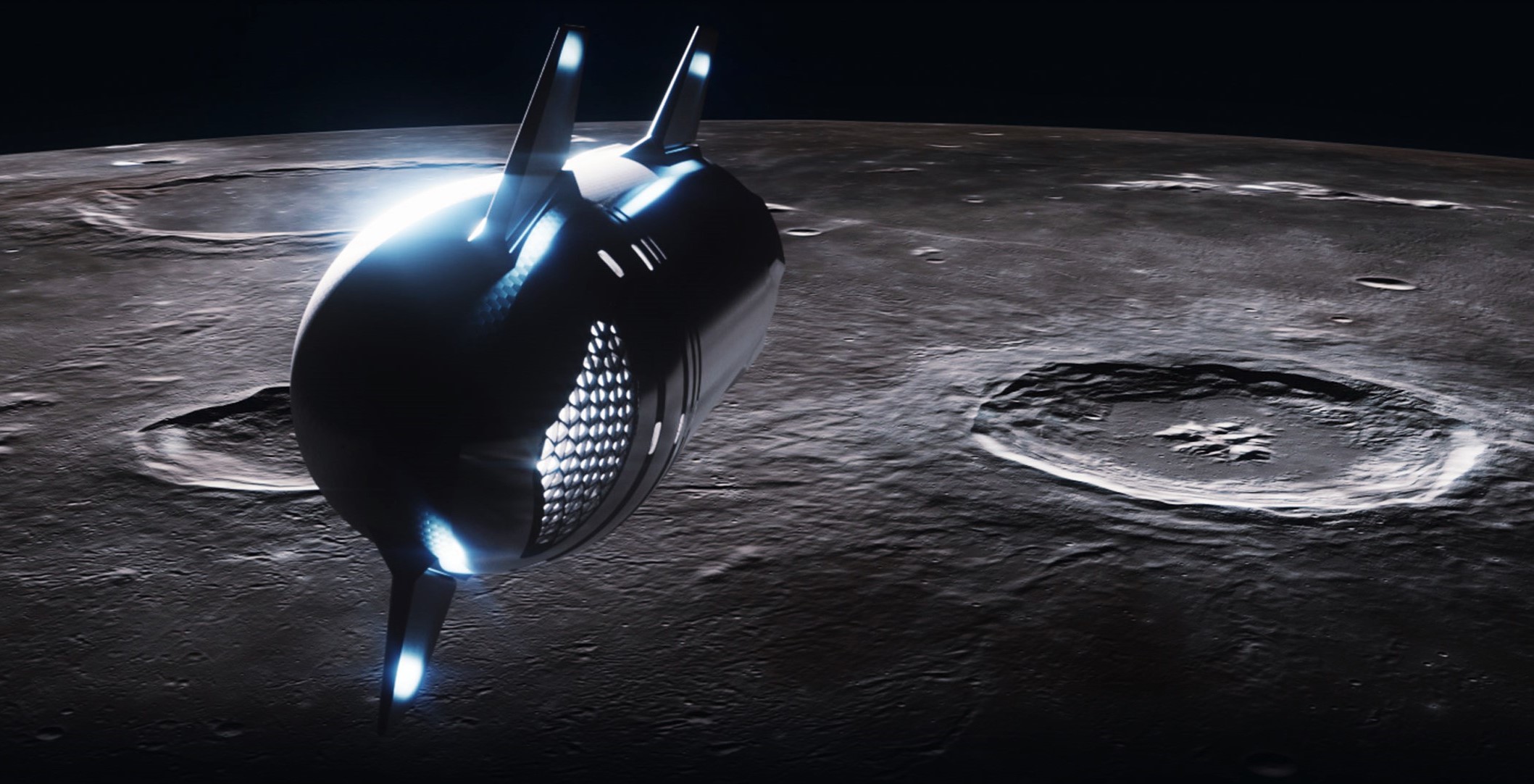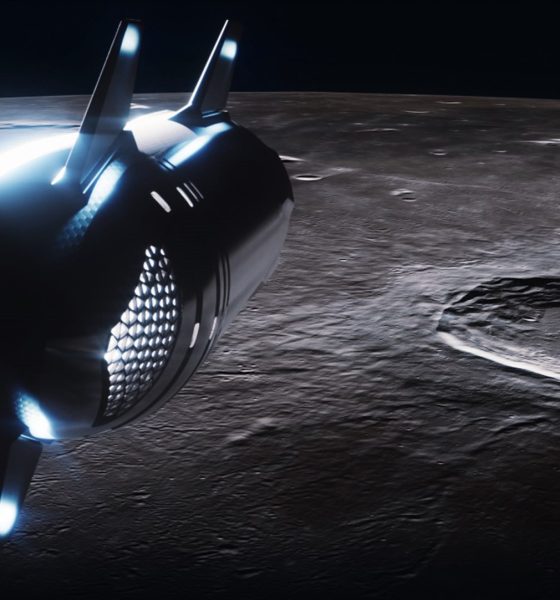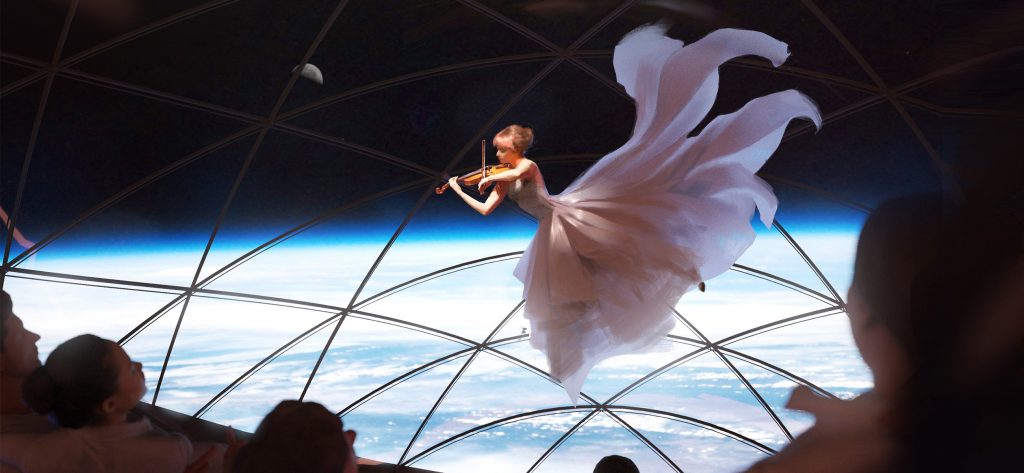

News
SpaceX on track to send Starship, private astronauts around the Moon in 2023
In a new media blitz, Japanese billionaire Yusaka Maezawa (‘MZ’) has reentered the spotlight with SpaceX CEO Elon Musk to update the public on their DearMoon initiative.
Unveiled in September 2018, Maezawa’s DearMoon project was founded with the intention of returning humankind to the Moon for the first time since the Apollo Program ended in the 1970s. This time around, though, a billionaire would singlehandedly fund the mission on their own, opening up as many as eight seats to an entirely different kind of astronaut. Initially, Maezawa positioned the project as an effort to take several artists – representing as diverse a collection of disciplines as possible – to the Moon.
Faced with arguably the most privileged and impactful vantage point known to humans, the voyage would aim to inspire the creation of new and groundbreaking art that could be shared with almost anyone on Earth.
In the ~30 months since Musk’s and Maezawa’s first announcement, a great deal about the Starship rocket meant to launch the mission has changed, including a radical redesign that replaced the widespread use of carbon fiber composite structures with stainless steel. Now, according to Maezawa, the purview of his DearMoon project has also changed in a big way.
In a video update, the retired billionaire stated that he’d ultimately concluded that his initial plan – selecting eight artists – was too narrow and arbitrary to properly give as many deserving people as possible a chance at a life-changing experience.
“Who do I mean by artists? The more I thought about it, the more ambiguous it became, and I began to think that every single person who is doing something creative could be called an artist. That is why I wanted to reach out to a wider, diverse audience to give more people across the world the opportunity to join this journey.”Yusaku Maezawa
Instead of a hand-selected crew elite or exceptional artists, Maezawa appears to be opening up the eight seats he purchased for guests to just about anyone on Earth, so long as they consider themselves an artist, are eager to push the envelope of creativity, and are willing to help their fellow crewmates achieve their own artistic goals.

Back in 2018, with Maezawa’s help in the form of an implied investment on the order of several hundred million dollars, SpaceX committed to launching Starship’s circumlunar DearMoon mission as early as 2023. Two and a half years and a radical Starship redesign later, Elon Musk says he is “highly confident” that SpaceX’s next-generation rocket will have “reach orbit many times” and “be safe enough for human transport” by 2023. Curiously, at least in the clips Maezawa ultimately included in the update video, Musk never stated that Starship was explicitly on track to launch humans on a circumlunar “free-return trajectory” – notably difficult for the extremely high-velocity reentry it entails.
Nevertheless, his otherwise confident statements – seemingly implying that Starship remains on track after more than two years of work – bode well for the DearMoon mission launching at least within 12-18 months of its 2023 target. At that rate, there’s a real chance that it will beat NASA’s state-funded SLS and Orion rocket to become the first crewed mission to the Moon in half a century.

News
Tesla aims to combat common Full Self-Driving problem with new patent
Tesla writes in the patent that its autonomous and semi-autonomous vehicles are heavily reliant on camera systems to navigate and interact with their environment.

Tesla is aiming to combat a common Full Self-Driving problem with a new patent.
One issue with Tesla’s vision-based approach is that sunlight glare can become a troublesome element of everyday travel. Full Self-Driving is certainly an amazing technology, but there are still things Tesla is aiming to figure out with its development.
Unfortunately, it is extremely difficult to get around this issue, and even humans need ways to combat it when they’re driving, as we commonly use sunglasses or sun visors to give us better visibility.
Cameras obviously do not have these ways to fight sunglare, but a new patent Tesla recently had published aims to fight this through a “glare shield.”
Tesla writes in the patent that its autonomous and semi-autonomous vehicles are heavily reliant on camera systems to navigate and interact with their environment.

The ability to see surroundings is crucial for accurate performance, and glare is one element of interference that has yet to be confronted.
Tesla described the patent, which will utilize “a textured surface composed of an array of micro-cones, or cone-shaped formations, which serve to scatter incident light in various directions, thereby reducing glare and improving camera vision.”

The patent was first spotted by Not a Tesla App.
The design of the micro-cones is the first element of the puzzle to fight the excess glare. The patent says they are “optimized in size, angle, and orientation to minimize Total Hemispherical Reflectance (THR) and reflection penalty, enhancing the camera’s ability to accurately interpret visual data.”
Additionally, there is an electromechanical system for dynamic orientation adjustment, which will allow the micro-cones to move based on the angle of external light sources.
This is not the only thing Tesla is mulling to resolve issues with sunlight glare, as it has also worked on two other ways to combat the problem. One thing the company has discussed is a direct photon count.
CEO Elon Musk said during the Q2 Earnings Call:
“We use an approach which is direct photon count. When you see a processed image, so the image that goes from the sort of photon counter — the silicon photon counter — that then goes through a digital signal processor or image signal processor, that’s normally what happens. And then the image that you see looks all washed out, because if you point the camera at the sun, the post-processing of the photon counting washes things out.”
Future Hardware iterations, like Hardware 5 and Hardware 6, could also integrate better solutions for the sunglare issue, such as neutral density filters or heated lenses, aiming to solve glare more effectively.
Elon Musk
Delaware Supreme Court reinstates Elon Musk’s 2018 Tesla CEO pay package
The unanimous decision criticized the prior total rescission as “improper and inequitable,” arguing that it left Musk uncompensated for six years of transformative leadership at Tesla.

The Delaware Supreme Court has overturned a lower court ruling, reinstating Elon Musk’s 2018 compensation package originally valued at $56 billion but now worth approximately $139 billion due to Tesla’s soaring stock price.
The unanimous decision criticized the prior total rescission as “improper and inequitable,” arguing that it left Musk uncompensated for six years of transformative leadership at Tesla. Musk quickly celebrated the outcome on X, stating that he felt “vindicated.” He also shared his gratitude to TSLA shareholders.
Delaware Supreme Court makes a decision
In a 49-page ruling Friday, the Delaware Supreme Court reversed Chancellor Kathaleen McCormick’s 2024 decision that voided the 2018 package over alleged board conflicts and inadequate shareholder disclosures. The high court acknowledged varying views on liability but agreed rescission was excessive, stating it “leaves Musk uncompensated for his time and efforts over a period of six years.”
The 2018 plan granted Musk options on about 304 million shares upon hitting aggressive milestones, all of which were achieved ahead of time. Shareholders overwhelmingly approved it initially in 2018 and ratified it once again in 2024 after the Delaware lower court struck it down. The case against Musk’s 2018 pay package was filed by plaintiff Richard Tornetta, who held just nine shares when the compensation plan was approved.
A hard-fought victory
As noted in a Reuters report, Tesla’s win avoids a potential $26 billion earnings hit from replacing the award at current prices. Tesla, now Texas-incorporated, had hedged with interim plans, including a November 2025 shareholder-approved package potentially worth $878 billion tied to Robotaxi and Optimus goals and other extremely aggressive operational milestones.
The saga surrounding Elon Musk’s 2018 pay package ultimately damaged Delaware’s corporate appeal, prompting a number of high-profile firms, such as Dropbox, Roblox, Trade Desk, and Coinbase, to follow Tesla’s exodus out of the state. What added more fuel to the issue was the fact that Tornetta’s legal team, following the lower court’s 2024 decision, demanded a fee request of more than $5.1 billion worth of TSLA stock, which was equal to an hourly rate of over $200,000.
Delaware Supreme Court Elon Musk 2018 Pay Package by Simon Alvarez
News
Tesla Cybercab tests are going on overdrive with production-ready units
Tesla is ramping its real-world tests of the Cybercab, with multiple sightings of the vehicle being reported across social media this week.

Tesla is ramping its real-world tests of the Cybercab, with multiple sightings of the autonomous two-seater being reported across social media this week. Based on videos of the vehicle that have been shared online, it appears that Cybercab tests are underway across multiple states.
Recent Cybercab sightings
Reports of Cybercab tests have ramped this week, with a vehicle that looked like a production-ready prototype being spotted at Apple’s Visitor Center in California. The vehicle in this sighting was interesting as it was equipped with a steering wheel. The vehicle also featured some changes to the design of its brake lights.
The Cybercab was also filmed testing at the Fremont factory’s test track, which also seemed to involve a vehicle that looked production-ready. This also seemed to be the case for a Cybercab that was spotted in Austin, Texas, which happened to be undergoing real-world tests. Overall, these sightings suggest that Cybercab testing is fully underway, and the vehicle is really moving towards production.
Production design all but finalized?
Recently, a near-production-ready Cybercab was showcased at Tesla’s Santana Row showroom in San Jose. The vehicle was equipped with frameless windows, dual windshield wipers, powered butterfly door struts, an extended front splitter, an updated lightbar, new wheel covers, and a license plate bracket. Interior updates include redesigned dash/door panels, refined seats with center cupholders, updated carpet, and what appeared to be improved legroom.
There seems to be a pretty good chance that the Cybercab’s design has been all but finalized, at least considering Elon Musk’s comments at the 2025 Annual Shareholder Meeting. During the event, Musk confirmed that the vehicle will enter production around April 2026, and its production targets will be quite ambitious.








